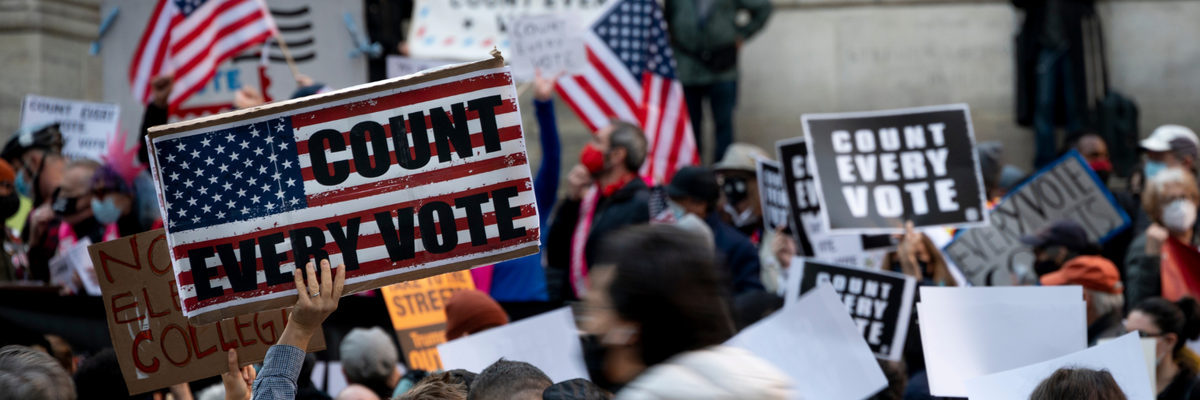Demystifying the Process: Why Does Ballot Counting Take So Long?

Every election night, millions tune in to see the latest vote counts. But as eager as people may be to know the results, patience is key. Waiting days for election results isn’t a sign of a broken system. Quite the contrary–it’s a sign of rigorous, carefully executed processes.
The idea that election results should be final on election night is rooted in tradition, not in reality. The U.S. election system is vast and decentralized, with each state—and often, each county—following unique processes. Understanding these processes and how they vary can help voters feel more confident in the results, even if they come later than anticipated.
So let’s demystify the process by exploring why ballot counting takes longer than expected, and understanding why this delay is essential for election integrity.
Each State Has Its Own Ballot Counting Process
Many assume election results should be immediate, but counting ballots accurately and fairly is a complex, multi-step process that varies significantly by state. For example, Arizona and Georgia, both key battleground states, recently introduced new hand-counting requirements that make the process particularly time-consuming. In Arizona, all ballots dropped off on Election Day must be hand-counted before they are processed and scanned.
In Georgia, the process is even more rigorous: poll workers must hand-count the total number of ballots (not the votes themselves) at each precinct before leaving on Election Night. Ballots must be counted by three separate poll workers until their tallies match, ensuring the total aligns with electronic records.
According to a new state law, North Carolina counties have to wait until polls close at 7:30 p.m. before they can start counting and reporting early voting ballots. Previously, counties were able to tabulate early vote results before the close of polls and release them on election night. By contrast, Michigan officials begin processing mail ballots eight days before Election Day, offering a head start on verification and tabulation. This variation from state to state means some states will report results faster than others, so waiting for all states to be done can sometimes take more than a day.
Mail-In Ballots: A Slower, More Secure Process
Processing mail-in ballots is a different ballpark as well because it involves multiple layers of verification that aren’t necessary with in-person voting. This verification process typically involves matching the voter’s signature on the ballot envelope with the signature on file. In some states, voters must also provide an ID number or the last four digits of their Social Security number. These steps make the process safer, which is part of what makes election fraud extremely rare, contrary to what right wing extremists have led people to believe.
After verification, each ballot must be opened manually. In states with heavy mail-in voting, like Arizona, many voters wait until Election Day to drop off their ballots in person, leading to a substantial backlog. Since Arizona accepts mail ballots that arrive up to four days postmarked by Election Day, counting can continue for days after the polls close.
Many states also restrict when election officials can start processing mail-in ballots. In Pennsylvania and Wisconsin, for example, this process can only begin on Election Day, which significantly increases the time required to produce accurate results. This process often requires multiple teams working around the clock to manage the surge in mail ballots.
Ballot Curing: Another Step to Ensure Voter Participation
Several states offer a curing process to help voters fix minor errors on their mail-in ballots. When a ballot is received, election officials carefully review it to confirm that all requirements are met. If there’s an issue, such as a missing signature, a signature that doesn’t match the voter’s record, or incomplete identification information, the ballot is marked for curing rather than being outright rejected.
Then, election officials reach out to the voter by mail, phone, or email, (depending on the state’s protocols), and provide clear instructions on how to correct the mistake. Typically, voters are asked to submit missing information, sign a statement, or in some cases, visit a designated location to confirm their identity.
Each state that offers ballot curing has a specific timeframe for corrections and it usually extends from Election Day for a few days to a week. This gives voters enough time, but it also makes ballot counting take longer overall. A small price to pay so voters aren’t disenfranchised for minor issues.
The Bigger Picture: Why Election Integrity Takes Time
When election results take time, it’s easy to wonder if something’s wrong. Far from being a sign of chaos, delays are a sign of caution, and it means the system’s legitimacy and reliability are being protected. The goal is to produce results that voters can trust, free from errors and fraud. In close races, where every vote matters, these extra steps are particularly important.
While the wait may feel long, each layer of verification, hand-counting, and auditing reinforces confidence in the outcome. Rather than rushing results, states prioritize transparency, accuracy, and fairness. When the final results are announced by credible sources, voters can be assured that each ballot has been carefully counted.
As we approach Election Day, it’s helpful to remember that ballot counting is a painstaking process. While the wait may be nerve-wracking, these steps are in place to ensure the election is fair and every voice is counted. In this case, patience truly is a virtue—one that helps safeguard democracy.
- Defectors: Paola Ramos Dissects the Latino Far Right ›
- 5 Latina Activists Disrupting the Political Status Quo ›




